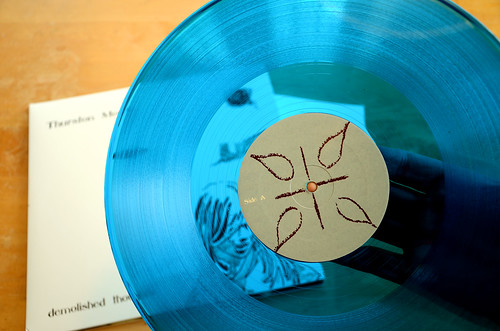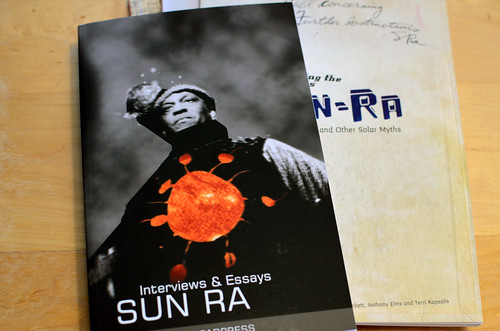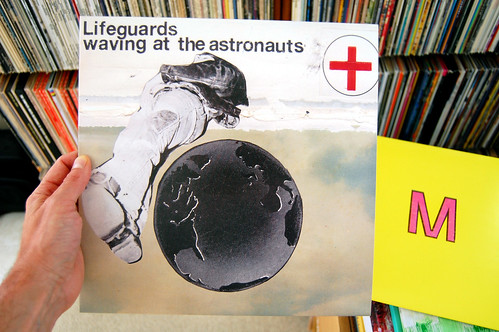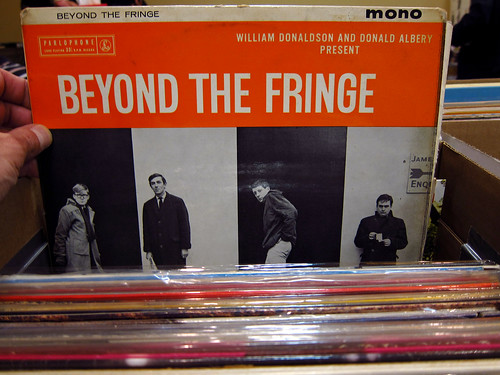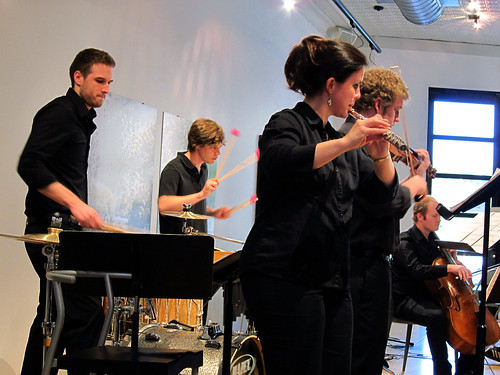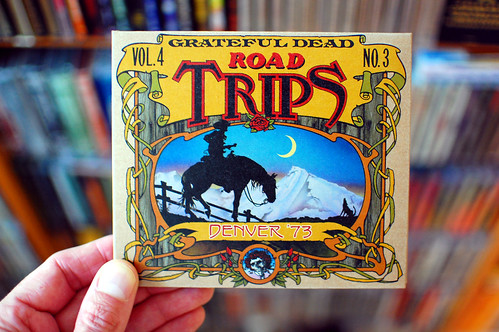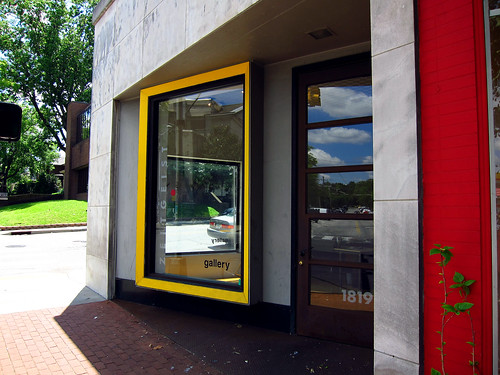
Sun Ra & His Myth Science Solar Arkestra: The Antique Blacks (Saturn/Art Yard CD)
On August 9, 1974, Richard M. Nixon resigned as President of the United States. I imagine this extraordinary event was on Sun Ra’s mind when, a week later, he assembled a small Arkestra for a live radio broadcast at Temple University in Philadelphia on August 17 [FN1]. While not making any direct references to Nixon, Ra took the opportunity to sermonize at length and he felt strongly enough about the performance to edit the recording for an LP entitled, The Antique Blacks, released on his own Saturn label later in the year (Saturn 81774). Ra clearly felt he had to get his message out. In actuality, this record was pressed in vanishingly small editions, sometimes re-titled, Interplanetary Concepts or There Is A Change In The Air and with various covers, including a generic “Acropolis” sleeve (see Campbell & Trent, pp.212-213). Like the mystical texts in his personal library, The Antique Blacks was probably made available to only initiates or persons Ra felt could decode his deeper, spiritual meanings. The ever-resourceful Art Yard label has reissued the album on CD with a bonus track recorded at the same session—but beware: Ra’s philosophizing is as inscrutable as ever, making this a strange and difficult listen for the casual fan. Keep in mind: it was a different era.
The record starts out easy enough with “Song No.1,” a gently rollicking space groove propelled by burbling percussion (including Clifford Jarvis on trap drums and Atakatune on congas) and Sonny’s reedy Rocksichord comping. This is one of my favorite “genres” of Sun Ra’s music (think “Love In Outer Space”) and this is particularly fine example. John Gilmore is up first with a terse but beautifully melodic tenor sax solo: starting with burnished low-register figures and then flying into the highest registers, he gracefully returns to earth with a variation on the theme he’d extemporaneously established. Yes, it’s another brilliant Gilmore solo! Ra is up next and then—what’s this?—who’s playing the screaming electric guitar? That’s a good question. The liner notes to the Art Yard CD say it’s the mysterious “Sly” while Campbell & Trent insist it’s a 15-year-old Dale Williams (p.313). Whoever it is plays with a rocked-out, psychedelicized abandon which works well enough in this setting, despite a severe intonation problem. Then Akh Tal Ebah enters with one of his smeared, expressionistic trumpet solos. Kwame Hadi is absent at this session, giving Ebah a rare opportunity to stretch out. While Ebah doesn’t hit every note with refined precision (like Hadi), his melodic ideas are unique and interesting. Gilmore enters with a tasteful counter-melody and, after some more buzzy comping from Ra, the “Song No.1” comes to an end. Very nice.
Much of the rest of the album appears to be taken from a long, continuous piece, but chopped up and re-arranged for release. Ra outlines a simple ascending bassline in waltz-time then pauses to make his declamations, the Arkestra periodically entering with pulsating space chords, ensemble freakouts or out-jazz solos. Gilmore is joined by Marshall Allen and Davis for a full-blown saxophone battle on “There Is a Change in the Air” and Williams/Sly sounds a little like Sonny Sharrock with his gonzo, metallic attack. On “The Ridiculous ‘I’ and the Cosmos Me,” Gilmore delivers one of his trademarked a cappella blowouts and James Jacson takes a positively ripping solo on the otherwise unwieldy bassoon. For the most part, Ra sticks to Rocksichording incongruous harmonies and skittering runs, except at the end where we get some spaceship synthesizer. But, most of the time, Sonny is preaching it, hot and heavy.
So, what is he on about? “There is a change in the air!” (Nixon has resigned!) “Do you not hear the heavy silence there?” Then he warns: “Some people are on the right road, but they’re going in the wrong direction. They need to turn around. The arrow points to pointlessness.” And it goes on from there with exhortations to “The Antique Blacks” (“they belong to me!”); a disquisition on “so-called equality”; the summoning of “dark spirit” Lucifer; and, of course, an invitation to join him in outer space. It might be interesting to transcribe the declamations and do some sort of exegesis, but I’m afraid I’m not the man for the job. And it is also tempting to dismiss this stuff as the rantings of a crank and accuse him of blatant charlatanism. But that would be unfair—and completely miss the point (whatever it is). Sun Ra is speaking in code and I lack the esoteric knowledge required to decipher his true meaning—or call his bluff. As a white guy in the year 2011, I also suspect I am not the intended audience for his message, who might have taken false hope in Nixon’s ignoble departure in the summer of 1974. Indeed, he makes it clear that while “There is a change in the air,” it is not necessarily for the better.
Thankfully, all this heaviness is leavened by a bit of frivolity: “This Song Is Dedicated To Nature’s God” is joyous and bouncy, a major-key singalong, with everyone chanting the title again and again over burbling percussion and herky-jerky Rocksichord. It’s a fun little number, although the guitar is woefully out of tune and whoever is playing seems to be struggling with the irregularly repeating chord progression. The album concludes with small-group arrangement of “Space Is The Place,” with Jarvis whipping up a swinging groove on his reduced kit and Ebah doing his “soul-man” thing. June Tyson is regrettably absent, but it does sound like a female vocalist is scatting away in the background—who is it? One of the bandmembers singing falsetto? I suppose it’s possible. In any event, the record ends on a high note with band exclaiming, “Sun Ra and his Band from Outer Space have entertained you here!”
Art Yard adds a bonus track, “You Thought You Could Build A World Without Us,” another long declamation with instrumental punctuation, but with Sonny playing synthesizer in “mad scientist” mode. Campbell & Trent list this ten-minute track separately as it was unheard until broadcast on WKCR’s Sun Ra festival in 1987 and they suggest it was material cut from the Space Is The Place movie, which was still unfinished in the summer of ‘74 (see p.209). The Art Yard CD states it was recorded on August 17 and while the sound quality is reduced, it is almost certainly from the same session. The reverb-drenched electric guitar meshes well with squiggly synthesizer and Ra is at his most messianic: “If you refuse to recognize me, I refuse to recognize you!...I am The Magic Lie! Greater than your truth!” Meanwhile, the Arkestra titters in the background and spare horns and ominous percussion ebb and flow while Ra continuously demonstrates his mastery of the MiniMoog, keeping things interesting and intense, even as he’s sermonizing away at the microphone. It’s an interesting track and fits in perfectly with the rest of the album.
Ultimately, The Antique Blacks is a difficult album for me to fully appreciate. I don’t enjoy being preached at, even if it’s Sun Ra up in the pulpit. At the same time, I cannot dismiss this stuff out of hand. Ra’s philosophy (such as it is) may be shrouded in hokum and showbiz and fail to cohere into a plausible cosmology, but it is interesting to note how well it served him. Herman "Sonny" Blount conjured up an elaborate persona, Sun Ra, and lived it—fully and completely—to the end of a long life, surrounded by a core of musicians who were as devoted to him as the followers of any guru. So it obviously worked—for him. The Antique Blacks is prime source material regarding Sun Ra’s psyche but it is musically less than completely satisfying. That said, the eight-minute “Song No.1,” is one of Sun Ra’s most delightful “space grooves” ever and makes this essential for the truly obsessed fan. As usual with Art Yard, the sound quality and packaging is first rate so if you want this, rest assured you get your money’s worth (and some of that money goes to the surviving Arkestra). But I wouldn’t recommend The Antique Blacks to novices.
+++
[FN1]: The location for this recording is highly speculative, based on the teenage recollection of Dale Williams (Id. p.213). It certainly sounds like a studio recording, but it lacks the ambience of Variety Recorders in New York, Sonny's usual choice. Considering the impromptu feel of the proceedings, a college radio station seems a likely venue. But who knows? No tapes of the broadcast have surfaced (if indeed it even occurred). Another discographical mystery.
